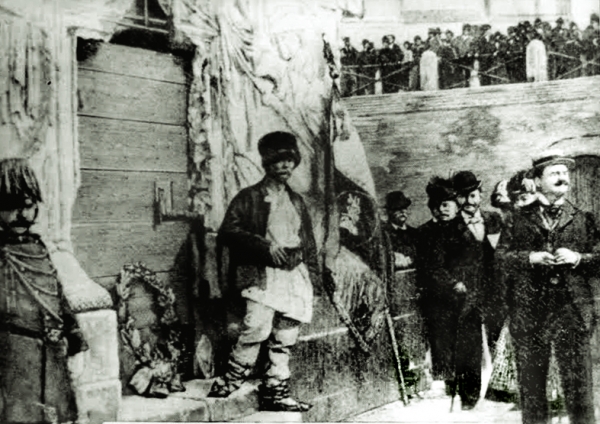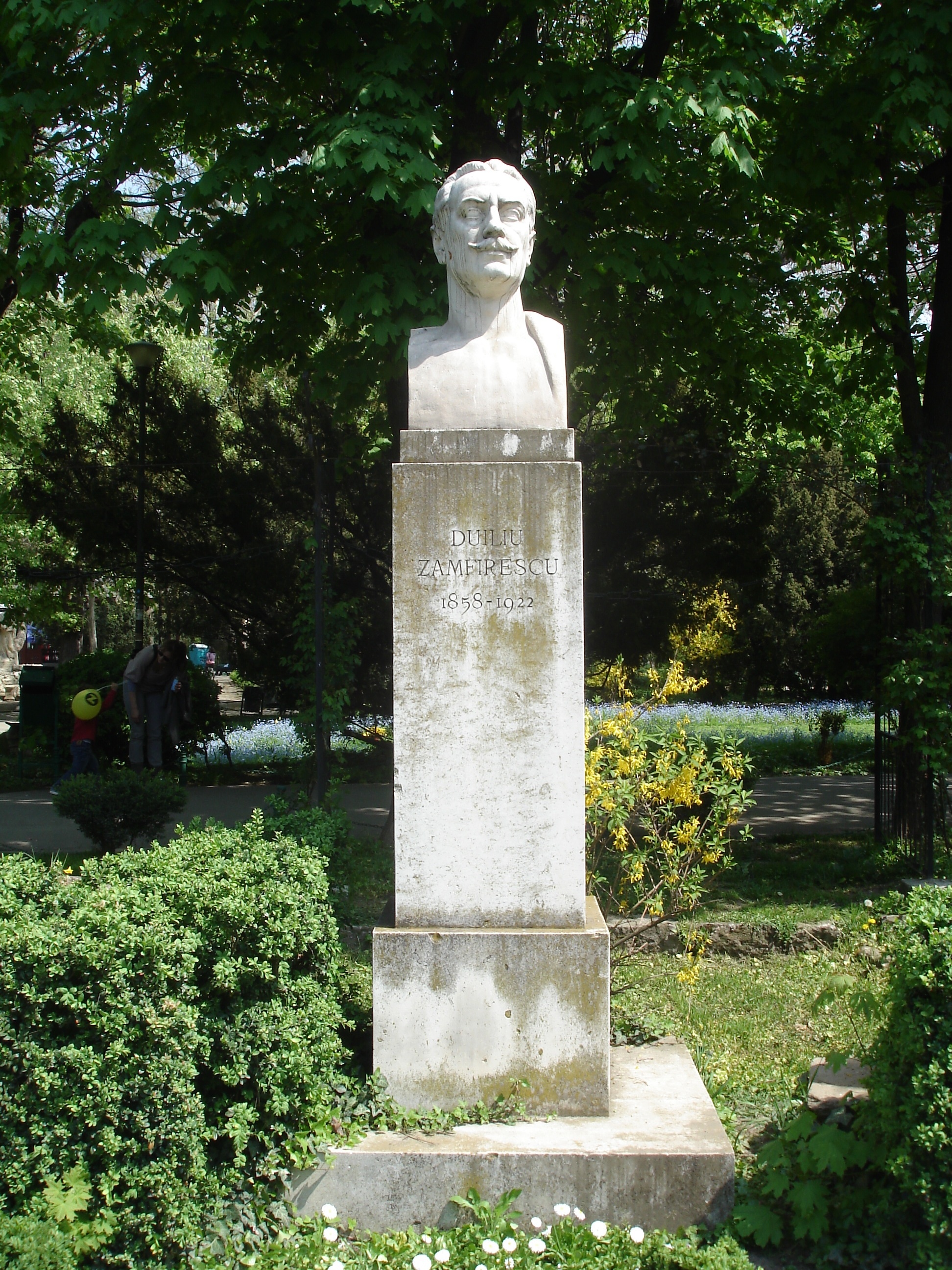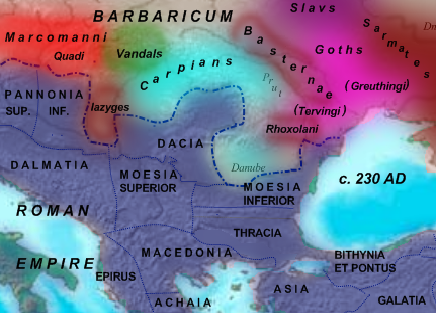|
Badea Cârțan
Badea Cârțan (roughly: ''Brother Cârțan'' – the common nickname of Gheorghe Cârțan; 24 January 1849 – 7 August 1911) was a self-taught ethnic Romanian shepherd who fought for the independence of the Romanians of Transylvania (then under Hungarian rule inside Austria-Hungary), distributing Romanian-language books that he secretly brought from Romania to their villages. In all he smuggled some 200,000 books for pupils, priests, teachers and peasants; he used several routes to pass through the Făgăraş Mountains. He was born in Cârțișoara, present-day Sibiu County, the second child of poor peasants (Nicolae and Ludovica) who were former serfs, and he spent his childhood tending sheep at the edge of his village. In between his later brushes with fame, he would always return to this activity. He became the head of his family on 2 October 1865 with the death of his father. Cârţan first crossed the mountains into the Romanian Old Kingdom with his sheep and a ... [...More Info...] [...Related Items...] OR: [Wikipedia] [Google] [Baidu] |
Cârțișoara
Cârțișoara (also ''Cârța Românească''; german: Oberkerz; hu, Kercisóra) is a commune in Sibiu County, Transylvania, Romania. It is composed of a single village, Cârțișoara. Bâlea Lake is located on the territory of Cârțișoara. The commune is located in the southeastern part of the county, from the county seat, Sibiu, and from Făgăraș. Cârțișoara is situated at the western edge of Țara Făgărașului, on the northern side of the Southern Carpathians, at the foot of the Făgăraș Mountains; it lies on the border with Argeș County and near the borders with Vâlcea and Brașov counties. The commune sits on the left bank of the river Cârțișoara, which flows south to north, discharging into the Olt River. At the 2011 census, Cârțișoara had a population of 1,243 inhabitants, of which 96.3% were ethnic Romanians The Romanians ( ro, români, ; dated exonym '' Vlachs'') are a Romance-speaking ethnic group. Sharing a common Romanian culture and ... [...More Info...] [...Related Items...] OR: [Wikipedia] [Google] [Baidu] |
Transylvanian Memorandum
The ''Transylvanian Memorandum'' ( ro, Memorandumul Transilvaniei) was a petition sent in 1892 by the leaders of the Romanians of Transylvania to the Austro-Hungarian Emperor-King Franz Joseph, asking for equal ethnic rights with the Hungarians, and demanding an end to persecutions and Magyarization attempts. Status After the Austro-Hungarian Compromise of 1867 (''Ausgleich''), Transylvania again became the integral part of Hungary. Initially Romanians (through their representatives, the Romanian National Party) took part in the political life, however, since 1869 after several disagreements they chose to enter into political passivity. They had several complaints; i.e. Romanians formed the majority of Transylvania's population, but they were underrepresented in the Hungarian Parliament due to electoral abuses and the higher property qualification required by the electoral laws, they were subjected to Magyarization and they resented that Transylvania had lost its autonomy, withou ... [...More Info...] [...Related Items...] OR: [Wikipedia] [Google] [Baidu] |
Spain
, image_flag = Bandera de España.svg , image_coat = Escudo de España (mazonado).svg , national_motto = ''Plus ultra'' (Latin)(English: "Further Beyond") , national_anthem = (English: "Royal March") , image_map = , map_caption = , image_map2 = , capital = Madrid , coordinates = , largest_city = Madrid , languages_type = Official language , languages = Spanish language, Spanish , ethnic_groups = , ethnic_groups_year = , ethnic_groups_ref = , religion = , religion_ref = , religion_year = 2020 , demonym = , government_type = Unitary state, Unitary Parliamentary system, parliamentary constitutional monarchy , leader_title1 = Monarchy of Spain, Monarch , leader_name1 = Felipe VI , leader_title2 = Prime Minister of Spain ... [...More Info...] [...Related Items...] OR: [Wikipedia] [Google] [Baidu] |
France
France (), officially the French Republic ( ), is a country primarily located in Western Europe. It also comprises of Overseas France, overseas regions and territories in the Americas and the Atlantic Ocean, Atlantic, Pacific Ocean, Pacific and Indian Oceans. Its Metropolitan France, metropolitan area extends from the Rhine to the Atlantic Ocean and from the Mediterranean Sea to the English Channel and the North Sea; overseas territories include French Guiana in South America, Saint Pierre and Miquelon in the North Atlantic, the French West Indies, and many islands in Oceania and the Indian Ocean. Due to its several coastal territories, France has the largest exclusive economic zone in the world. France borders Belgium, Luxembourg, Germany, Switzerland, Monaco, Italy, Andorra, and Spain in continental Europe, as well as the Kingdom of the Netherlands, Netherlands, Suriname, and Brazil in the Americas via its overseas territories in French Guiana and Saint Martin (island), ... [...More Info...] [...Related Items...] OR: [Wikipedia] [Google] [Baidu] |
Orientalism
In art history, literature and cultural studies, Orientalism is the imitation or depiction of aspects in the Eastern world. These depictions are usually done by writers, designers, and artists from the Western world. In particular, Orientalist painting, depicting more specifically the Middle East, was one of the many specialisms of 19th-century academic art, and the literature of Western countries took a similar interest in Oriental themes. Since the publication of Edward Said's ''Orientalism (book), Orientalism'' in 1978, much academic discourse has begun to use the term "Orientalism" to refer to a general patronizing Western attitude towards Middle Eastern, Asian, and North African societies. In Said's analysis, the West Essentialism, essentializes these societies as static and undeveloped—thereby fabricating a view of Oriental culture that can be studied, depicted, and reproduced in the service of Imperialism, imperial power. Implicit in this fabrication, writes Said, is the ... [...More Info...] [...Related Items...] OR: [Wikipedia] [Google] [Baidu] |
Duiliu Zamfirescu
Duiliu Zamfirescu (30 October 1858 – 3 June 1922) was a Romanian novelist, poet, short story writer, lawyer, Nationalism, nationalist politician, journalist, diplomat and memoirist. In 1909, he was elected a list of members of the Romanian Academy, member of the Romanian Academy, and, for a while in 1920, he was List of Romanian Foreign Ministers, Foreign Minister of Romania. Zamfirescu is best remembered for his ''Comăneștenilor'' Literature cycle, literary cycle, comprising his novels ', ', ''În război'', ''Îndreptări'', and ''Anna''. Biography Born in Plăinești, Râmnicu Sărat County (present-day Dumbrăveni, Vrancea, Dumbrăveni, Vrancea County), he attended elementary school and then Unirea National College (Focșani), gymnasium in Focșani. He later studied at the Matei Basarab National College, Matei Basarab High School in Bucharest (1873–1876), before entering the University of Bucharest's Faculty of Law.Săndulescu, p.XLIII He graduated in 1880. Zamfirescu ma ... [...More Info...] [...Related Items...] OR: [Wikipedia] [Google] [Baidu] |
Dacians
The Dacians (; la, Daci ; grc-gre, Δάκοι, Δάοι, Δάκαι) were the ancient Indo-European inhabitants of the cultural region of Dacia, located in the area near the Carpathian Mountains and west of the Black Sea. They are often considered a subgroup of the Thracians. This area includes mainly the present-day countries of Romania and Moldova, as well as parts of Ukraine, Moravian Banovina, Eastern Serbia, Northern Bulgaria, Slovakia, Hungary and Southern Poland. The Dacians and the related Getae spoke the Dacian language, which has a debated relationship with the neighbouring Thracian language and may be a subgroup of it. Dacians were somewhat culturally influenced by the neighbouring Scythians and by the Celtic invasion of the Balkans, Celtic invaders of the 4th century BC. Name and etymology Name The Dacians were known as ''Geta'' (plural ''Getae'') in Ancient Greek writings, and as ''Dacus'' (plural ''Daci'') or ''Getae'' in Roman Empire, Roman documents, b ... [...More Info...] [...Related Items...] OR: [Wikipedia] [Google] [Baidu] |
Origin Of The Romanians
Several theories address the issue of the origin of the Romanians. The Romanian language descends from the Vulgar Latin dialects spoken in the Roman provinces north of the "Jireček Line" (a proposed notional line separating the predominantly Latin-speaking territories from the Greek-speaking lands in Southeastern Europe) in Late Antiquity. The theory of Daco-Roman continuity argues that the Romanians are mainly descended from the Daco-Romans, a people developing through the cohabitation of the native Dacians and the Roman colonists in the province of Dacia Traiana (primarily in present-day Romania) north of the river Danube. The competing immigrationist theory states that the Romanians' ethnogenesis commenced in the provinces south of the river with Romanized local populations (known as Vlachs in the Middle Ages) spreading through mountain refuges, both south to Greece and north through the Carpathian Mountains. Other theories state that the Romanized local populations were p ... [...More Info...] [...Related Items...] OR: [Wikipedia] [Google] [Baidu] |
Trajan's Column
Trajan's Column ( it, Colonna Traiana, la, Columna Traiani) is a Roman triumphal column in Rome, Italy, that commemorates Roman emperor Trajan's victory in the Dacian Wars. It was probably constructed under the supervision of the architect Apollodorus of Damascus at the order of the Roman Senate. It is located in Trajan's Forum, north of the Roman Forum. Completed in AD 113, the freestanding column is most famous for its spiral bas relief, which depicts the wars between the Romans and Dacians (101–102 and 105–106). Its design has inspired numerous victory columns, both ancient and modern. The structure is about in height, including its large pedestal. The shaft is made from a series of 20 colossal Carrara marble drums, each weighing about 32 tons, with a diameter of . The frieze winds around the shaft 23 times. Inside the shaft, a spiral staircase of 185 steps provides access to a viewing deck at the top. The capital block of Trajan's Column weighs 53.3 tons, and ha ... [...More Info...] [...Related Items...] OR: [Wikipedia] [Google] [Baidu] |
Rome
, established_title = Founded , established_date = 753 BC , founder = King Romulus (legendary) , image_map = Map of comune of Rome (metropolitan city of Capital Rome, region Lazio, Italy).svg , map_caption = The territory of the ''comune'' (''Roma Capitale'', in red) inside the Metropolitan City of Rome (''Città Metropolitana di Roma'', in yellow). The white spot in the centre is Vatican City. , pushpin_map = Italy#Europe , pushpin_map_caption = Location within Italy##Location within Europe , pushpin_relief = yes , coordinates = , coor_pinpoint = , subdivision_type = Country , subdivision_name = Italy , subdivision_type2 = Region , subdivision_name2 = Lazio , subdivision_type3 = Metropolitan city , subdivision_name3 = Rome Capital , government_footnotes= , government_type = Strong Mayor–Council , leader_title2 = Legislature , leader_name2 = Capitoline Assemb ... [...More Info...] [...Related Items...] OR: [Wikipedia] [Google] [Baidu] |
Self-determination
The right of a people to self-determination is a cardinal principle in modern international law (commonly regarded as a ''jus cogens'' rule), binding, as such, on the United Nations as authoritative interpretation of the Charter's norms. It states that peoples, based on respect for the principle of equal rights and fair equality of opportunity, have the right to freely choose their sovereignty and international political status with no interference. The concept was first expressed in the 1860s, and spread rapidly thereafter. During and after World War I, the principle was encouraged by both Soviet Premier Vladimir Lenin and United States President Woodrow Wilson. Having announced his Fourteen Points on 8 January 1918, on 11 February 1918 Wilson stated: "National aspirations must be respected; people may now be dominated and governed only by their own consent. 'Self determination' is not a mere phrase; it is an imperative principle of action." During World War II, the princip ... [...More Info...] [...Related Items...] OR: [Wikipedia] [Google] [Baidu] |
Vienna
en, Viennese , iso_code = AT-9 , registration_plate = W , postal_code_type = Postal code , postal_code = , timezone = CET , utc_offset = +1 , timezone_DST = CEST , utc_offset_DST = +2 , blank_name = Vehicle registration , blank_info = W , blank1_name = GDP , blank1_info = € 96.5 billion (2020) , blank2_name = GDP per capita , blank2_info = € 50,400 (2020) , blank_name_sec1 = HDI (2019) , blank_info_sec1 = 0.947 · 1st of 9 , blank3_name = Seats in the Federal Council , blank3_info = , blank_name_sec2 = GeoTLD , blank_info_sec2 = .wien , website = , footnotes = , image_blank_emblem = Wien logo.svg , blank_emblem_size = Vienna ( ; german: Wien ; ba ... [...More Info...] [...Related Items...] OR: [Wikipedia] [Google] [Baidu] |






